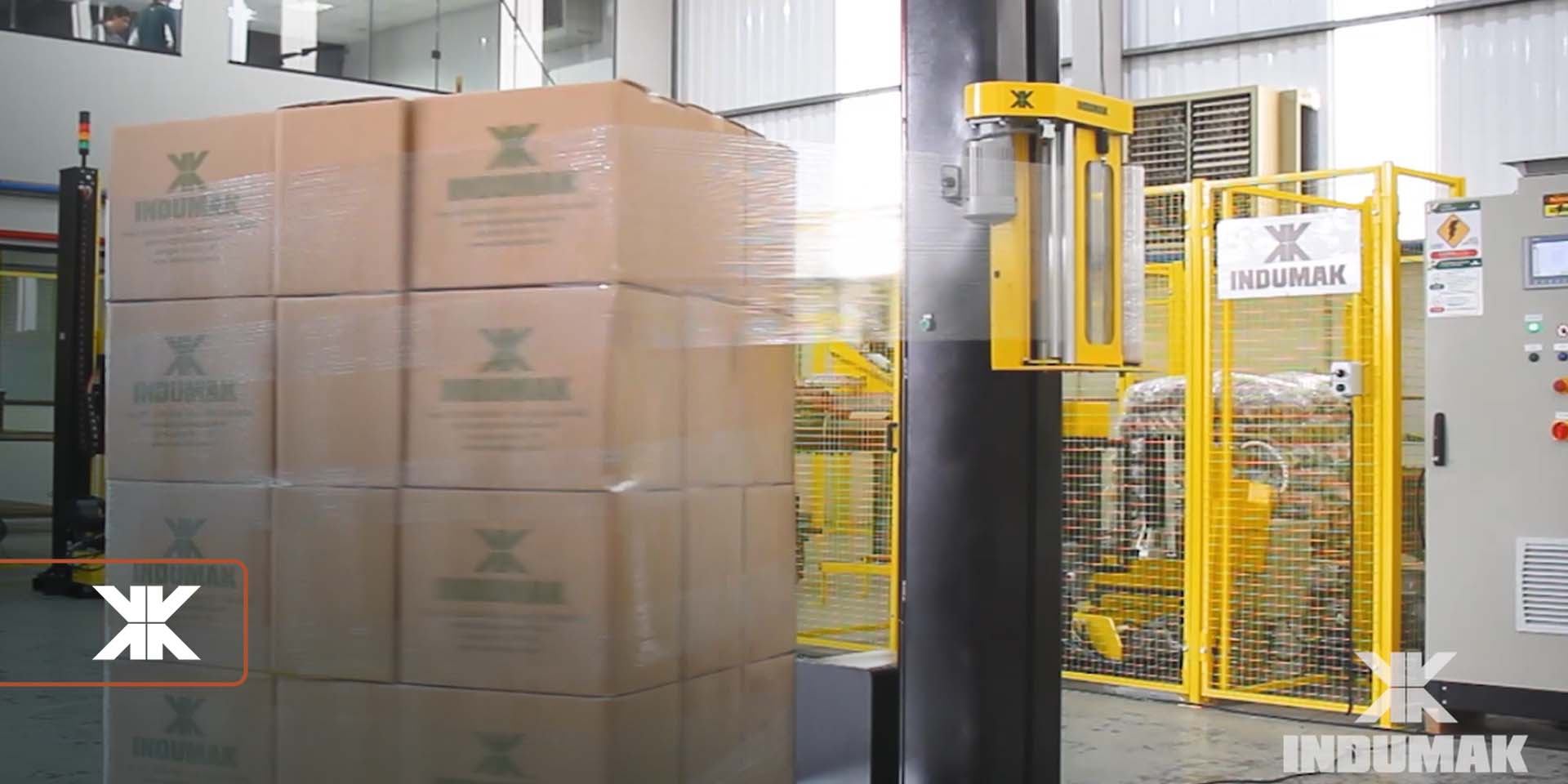
Categoria: Movement
THE IMPORTANCE OF TECHNOLOGY IN THE PALLETIZING OF BOXES
The palletizing of boxes is an essential process in many industries that involves everything from the storage to the distribution of products.
It is a step that requires precision and efficiency to ensure that goods are moved safely and quickly.
With palletizing automation, robots can manipulate a wide variety of box sizes and shapes, optimizing the handling process and preventing drops, losses, displacement or crushing of products.
Next, check out how this type of palletizing works, the benefits of automation and the ideal accessories for your project.

How does box palletizing work?
Box palletizing is an automated process that involves using robots to stack boxes on pallets accurately and efficiently.
The boxes are fed into a continuous production line and then moved by conveyors to the palletizing area.
The robots, usually of the articulated arm type, use claws to pick up the boxes and place them on pre-defined pallets.
Read also: How automatic bagging and palletizing systems increase productivity
What benefits does palletizing automation offer?
Palletizing boxes with robots offers complete automation of the box stacking process, reducing labor and increasing process efficiency.
The robots can also be programmed to handle different box sizes and configurations, allowing for greater flexibility in the palletizing process.
By investing in automation, we increase the efficiency and quality of processes, from storage to product distribution.
With box palletizing, significant cost savings can be achieved compared to manual palletizing.
In short, the main benefits of palletizing boxes for your business are:
- Reduction of manpower;
- Increased efficiency in the operation;
- Flexibility to meet different sizes of boxes;
- More security in movement and storage;
- More protected products;
- Cost savings.
Read also: 6 advantages of automatic palletizing for the food industry
What makes up the robotic layout?
The robotic layout for boxes includes various accessories such as grippers, sensors, and controllers.
The grippers are used to pick and move them accurately and safely. The sensors are used to detect the boxes and to ensure that the robotic system identifies and can recognize and manipulate the boxes.
These devices ensure that the entire system works independently both for the feeding of boxes and for pallet handling, as well as ensuring the safety of the operator, avoiding work accidents.
Programmable logic controllers, on the other hand, are used to program the movements of the robot and ensure that it is performing all the proper movements.
A robotic layout for boxes consists of several components that ensure that the palletizing process is executed efficiently and accurately.
Here’s a look at some of them:
Conveyor belt
It feeds the boxes to the point where the robot palletizes.
Positioning system
Ensures that the boxes are positioned correctly to be stacked.
Palletizer robot
Equipped with a specific gripper to stack the boxes on pallets.
Palletizing system
Composed of: box conveyors, pallet dispenser, pallet handling system — empty or loaded, stretch system, among other equipment to move the pallets and stack the boxes safely and efficiently until the end of the production process.
A robotic layout for palletizing boxes can be customized to meet the needs of a specific facility.
The robots are strategically positioned along the production line and the layout must be designed to minimize unnecessary movements of the robots, and ensure that the boxes are placed efficiently on the pallets.
The types of claws and positioning
The boxes are palletized using specific grippers that have been designed to handle different sizes and configurations of boxes.
They are also positioned according to pre-defined specifications, such as height, width and spacing.
There are several types of grippers available for use in box palletizing robots. The grippers can be customized to meet the specific needs of the product.
Indumak has a complete catalogue with options for its palletizing system, including the specific grippers for palletizing boxes, which are the clamp grippers, creep grippers and vacuum grippers.
The types of different products and productive capacity
Palletizing robots can handle a wide variety of products in boxes, including food, beverages, pharmaceuticals, chemicals, automotive parts, and more.
The productive capacity of a box palletizing system with robots depends on several factors, including the maximum weight the robot can carry and the number of cycles per minute the robot can perform.
A well-designed robotic layout and the use of custom grippers can help maximize the efficiency of your production process.
Count on Indumak’s line of equipment to produce more and better.
Contact our team of experts and ensure the best solution for your business.







